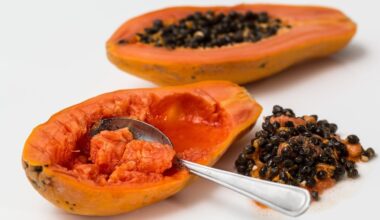Copper, with its warm reddish hue and unique properties, has captivated humanity for millennia. From ancient civilizations to the modern world, copper has played a vital role in technological advancements, construction, and even human health. This article delves into 10 fascinating facts about copper, highlighting its historical significance, remarkable characteristics, and diverse applications.
01: A Metal Used Since Antiquity
Copper’s history as a companion to humankind stretches back an astonishing 10,000 years. Evidence suggests that early civilizations readily utilized native copper. It means the relatively pure metal could be found in nature without complex extraction processes. Archaeological discoveries reveal copper tools and ornaments from ancient Egypt, Mesopotamia, and the Indus Valley Civilization. It signifies its widespread use in the development of human societies.
02: Ductility and Malleability
One of copper’s most remarkable properties is its exceptional ductility and malleability. Ductility refers to a metal’s ability to be drawn into thin wires, while malleability allows it to be hammered or pressed into flat sheets. These properties made copper ideal for early metalworking. Artisans could readily shape copper into tools, weapons, and decorative objects, laying the foundation for advancements in metalworking techniques.

03: Conductivity Sets Copper Apart
Copper’s exceptional electrical and thermal conductivity have been instrumental in shaping technological innovations. As a superior conductor of electricity and heat, copper proved invaluable in the development of electrical wiring, motors, and heat sinks. From the dawn of the electrical age to the intricate circuitry of modern electronics, copper remains a vital component, ensuring efficient transmission of electricity and heat dissipation.
04: The Antibacterial Power of Copper
Copper possesses a unique property – it exhibits inherent antimicrobial activity. Studies have shown that copper surfaces can inactivate a wide range of bacteria and viruses within minutes of contact. This natural antimicrobial property makes copper an attractive material for use in hospitals, public transportation areas, and even household appliances. The potential of copper to combat the spread of pathogens is a valuable asset in promoting public health.
05: The Statue of Liberty’s Copper Transformation
One of the most iconic landmarks in the world, the Statue of Liberty, offers a testament to copper’s unique properties. Clad in 31 tons of copper sheets, the statue’s initial appearance was a bright, reddish copper. Over time, the copper has undergone a natural process called patination. When exposed to the elements, copper reacts with oxygen and moisture to form a green patina, a layer of copper carbonate. This green patina not only protects the underlying copper but also contributes to the statue’s majestic and enduring presence.

06: Copper’s Role in Human Health
Copper is an essential nutrient that plays a crucial role in human health. It is involved in various bodily functions, including the formation of red blood cells, collagen production, and enzyme activity. A copper deficiency can lead to a range of health problems, including anemia, weakened bones, and impaired immune function. Fortunately, copper is readily found in various foods, such as liver, shellfish, nuts, and seeds, ensuring we obtain the necessary amounts for optimal health.
07: From Mine to Recycle
Copper is a highly sustainable metal due to its exceptional recyclability. An estimated 80% of all copper ever mined is still in use today. Copper scrap can be readily recycled and reused without significant degradation in its properties. This closed-loop system minimizes the need for virgin copper extraction, reducing environmental impact and promoting resource conservation.
08: Copper’s Latin Legacy
The name “copper” has its roots in the Latin word “cuprum.” The Romans, who extensively utilized copper for coinage, plumbing, and utensils, are credited with giving this metal its enduring name. The term “cuprum” is believed to be derived from the Cypriot word “aes Cyprium,” meaning “metal of Cyprus,” an island renowned for its rich copper deposits in ancient times.
09: The Diverse Uses of Copper
Copper’s applications extend far beyond electrical wiring and plumbing. It is used in a vast array of products, including musical instruments like brass instruments, architectural elements like roofing and cladding, and even cookware due to its excellent heat distribution properties. Copper’s unique combination of physical and chemical properties has ensured its presence in various industries and everyday objects.

10: Copper’s Enduring Role in a Sustainable World
Copper’s remarkable properties and sustainable qualities position it as a crucial metal for the future. As the world strives for a more sustainable future, copper’s high conductivity will be instrumental in the development of renewable energy technologies like wind turbines and solar panels. Additionally, its inherent antimicrobial properties hold promise for applications in healthcare facilities and public spaces, promoting hygiene and reducing reliance on harsh chemicals. With continued research and innovation, copper’s potential to contribute to a healthier and more sustainable future is vast.
A Legacy of Innovation
Copper’s journey from a metal used in ancient civilizations to a vital component of modern technology is a testament to its enduring value. Its unique properties, from exceptional conductivity to natural antimicrobial activity, have shaped human progress across various fields. As we move forward, copper’s sustainable qualities and diverse applications ensure its continued relevance in building a greener and more technologically advanced future. So, the next time you encounter copper, whether in a gleaming new penny, a lifesaving medical device, or the intricate wiring within your home, remember the rich history and enduring legacy of this timeless treasure.










